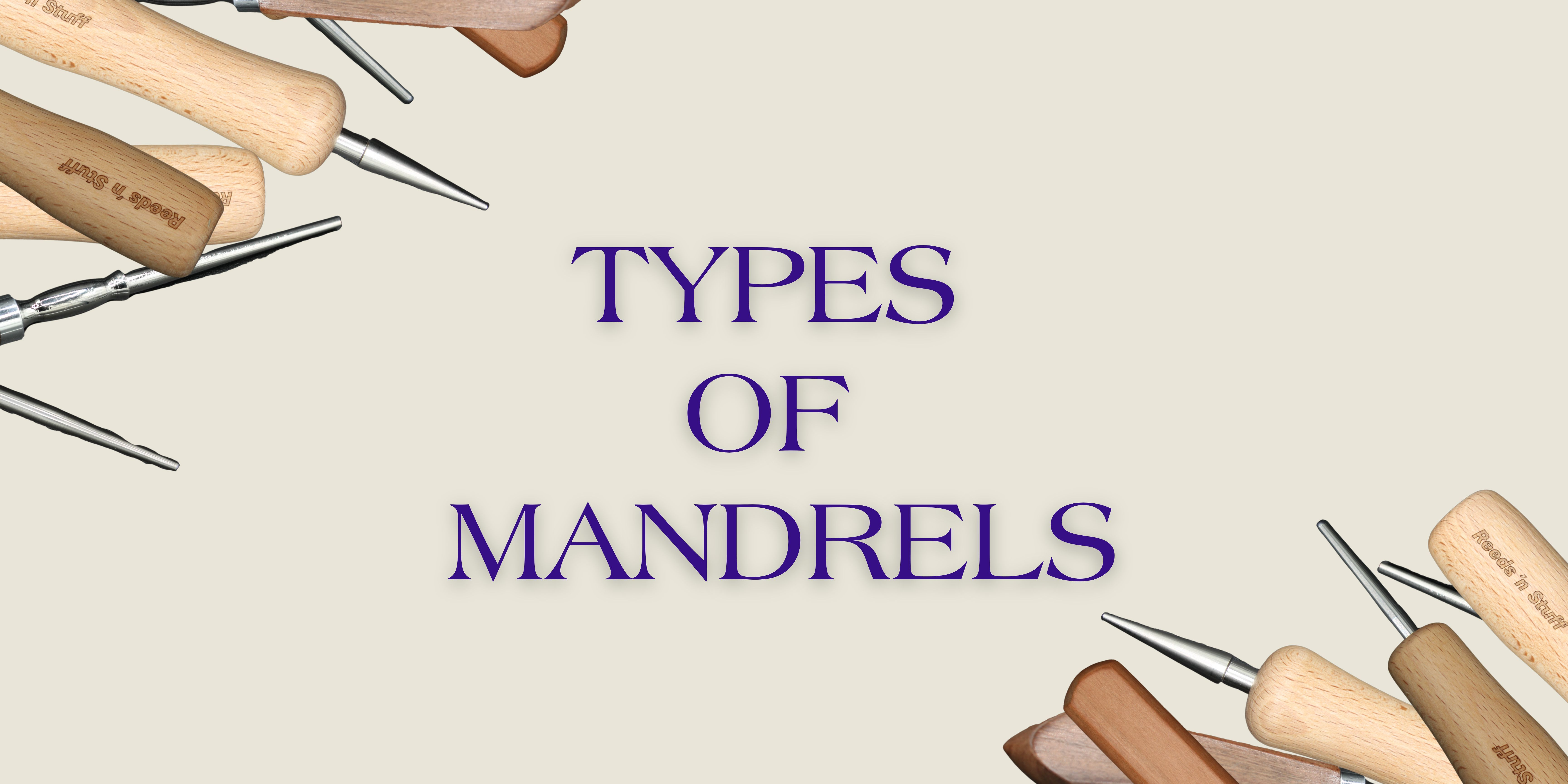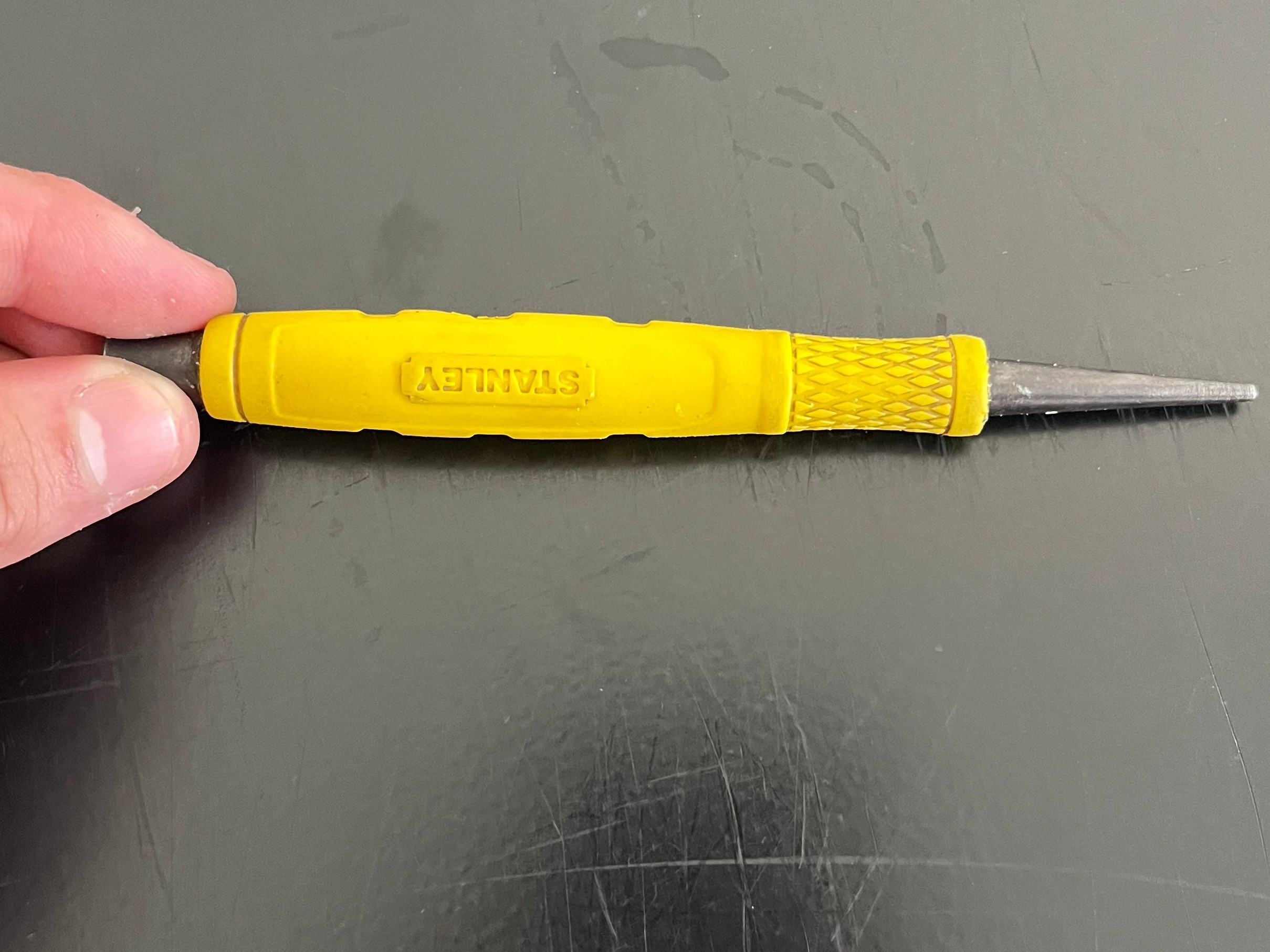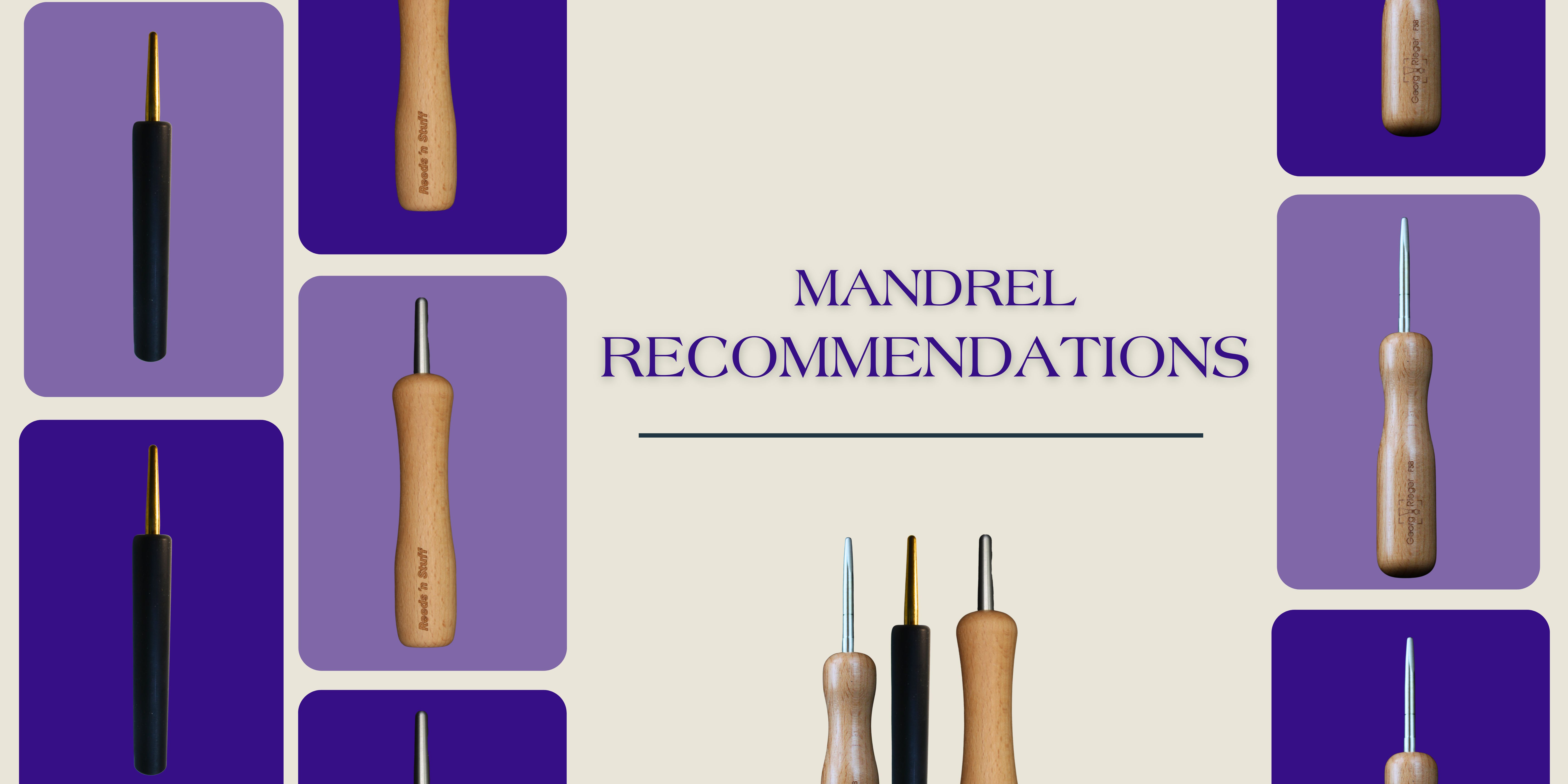Holding Mandrel vs Forming Mandrel. What’s the Difference?

Have you been wondering what the difference is between a holding mandrel and a forming mandrel? Bassoonist Zachary Senick is back to give you the answer and how to improve your reed making by utilizing their differences.
Mandrels are a valuable tool used in reed making to help a reed maker support the reed while forming, shaping, and scraping. Think of a mandrel like an extension of the reed. It allows you to stabilize and manipulate the reed safely.
The holding mandrel is an indispensable tool, used in all stages of a reed’s life, from forming to finishing. On the flip side, a forming mandrel is used exclusively during the reed making process during the forming stage.
Holding and Forming Mandrel Similarities
On the surface, all mandrels have the same basic functions:
- Allow you to stabilize the reed without applying extra pressure, preventing it from collapsing inward or cracking, especially when making wire adjustments.
- To create and or maintain the desired shape of the tube and throat of the reed.
- Provides consistency in the reed making process. Many mandrels have markers for how far to push the reed onto it, allowing the reed maker to create the same shape and opening with each reed.
Differences
First, the two mandrels have physical differences that can be observed. The forming mandrel is overall longer with a flattened tip, while the holding mandrel is shorter with a rounded tip. Also, the forming mandrel has a contour that is narrower and thicker at certain points of the metal section that goes inside the reed. Compared to the holding mandrel, which is the same shape from the tip to the handle.
The forming mandrel is used exclusively in the blank-making process. It is used to help open up and round the tube, creating the desired shape for the throat. This allows the proper amount of air to go through the reed, creating more resonance in the sound. By using both a holding and forming mandrel in the blank-making process, it will help the reed to avoid cracking by allowing the reed to gradually adjust to the new round shape. The holding mandrel, which has a narrower tip, should be used before the forming mandrel to get the reed rounded. Then the forming mandrel should be used to open the throat wider.
Technically, the holding mandrel can be used for every step in the blank and reed finishing process. However, owning and utilizing a forming mandrel for its specific role will help enhance and improve your reeds.
Reeds Cracking While Forming?
If you are struggling with the reed cracking down the middle of the reed, some reed makers utilize the three different tools in a three-step approach that eases the reed into its new round shape.
In addition to a holding and forming mandrel, a nail punch can be added to the process. It is used to open up the butt of the reed to create cracks offset from the middle. This will help prevent the reed from cracking down the middle.

A nail punch set can be purchased at your local hardware store. However, you’ll only use the 1/32 nail punch.
Three-Step Process to Prevent Reed Cracking:
- After initial preparation of the reed, such as scoring and beveling has occurred, insert a 1/32 nail punch into the butt of the reed to start the cracking process. This will allow any cracking that happens to be offset, allowing the scoring to do its job.
- Next, use the holding mandrel to introduce the reed to its new round shape.
- Finally, use the forming mandrel to open up the throat of the reed by rounding out the tube. This will provide more resonance for the reed.
Remember, cracking is a normal part of the process. What we’re trying to avoid is cracking down the center and into the blade of the reed. Using this three-step method gives us more control over where the cracking takes place.
Mandrel Recommendations
Mandrels are not all created equal. Each one has a slightly different length and thickness of metal rod, size of the handle, and contour created inside the reed.
- Fox Holding Mandrel: A great budget-friendly option.
- Reeds ’n Stuff Compact Holding Mandrel: Great for reed makers with smaller hands to allow for a more comfortable feel.
- The Rieger F5B Forming Mandrel: The gold standard for forming reeds.

Conclusion
There are a variety of tools on the market that a reedmaker can use during the blank-making process. Experiment to figure out what combination of mandrels will work best for you and your desired reed making goals.
RSC sells a variety of different options you can try out from the most popular brands of Fox, Reeds ’n stuff, Rieger, and Rigotti. Find the mandrel that is the perfect fit for your reed making. Shop all mandrels HERE.
